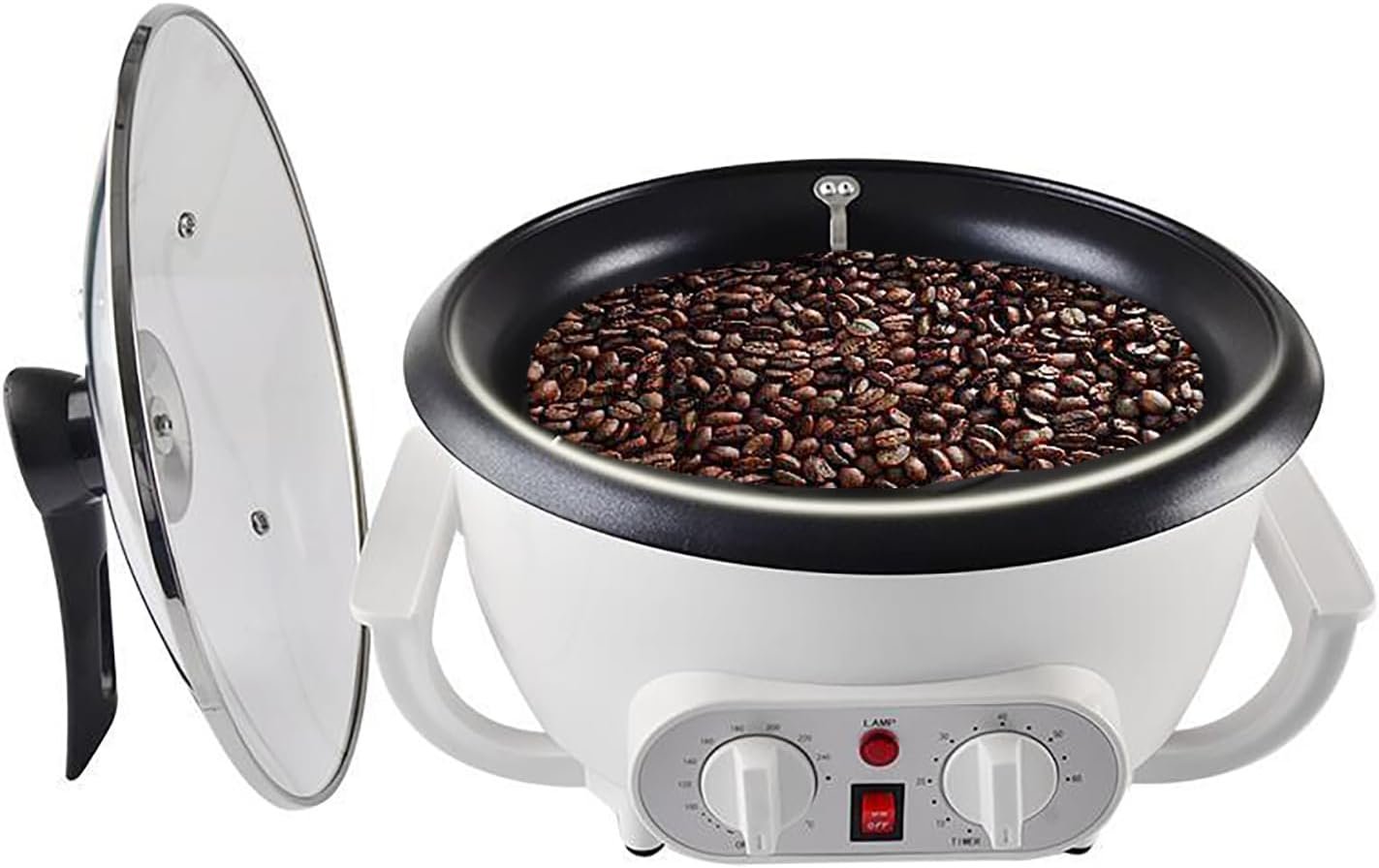Have you ever been told that light roast coffee is gentler on the stomach thanks to its lower acidity levels? The idea that lighter roasts equate to a smoother, less acidic cup of joe has been a prevailing belief among coffee enthusiasts for some time. But what if I told you that this assumption might not be as straightforward as it seems? In today’s exploration of the complex world of coffee acidity, we delve into the intriguing question: Does light roast coffee really have less acid?
Table of contents

Acidity Vs PH Levels
As we venture deeper into this aromatic realm, we’ll navigate the fascinating landscape of perceived acidity versus actual pH levels in different coffee roasts. Unraveling myths while unveiling truths, we aim to equip you with a well-rounded understanding of how roasting impacts acidity and why some perceive light roasts to be milder on the palate. So sip your favorite brew and get ready to challenge preconceptions as we uncover the captivating secrets behind light roast coffee’s acidity profile.
Understanding Acid Levels
In Coffee RoastsWhen we talk about acidity in coffee, it’s important to note that it doesn’t refer to the pH level you might find on a chemistry chart. In coffee terms, acidity actually describes the brightness and liveliness of the flavor, often perceived at the sides of your tongue rather than an actual acidic pH value. This fundamental difference between perceived acidity and pH levels is key in demystifying coffee’s acid content.
Coffee Roaster Machine for Home DIY

Coffee Roaster Machine for Home
- Upgrade coffee machine for Home
- High Efficient Roasting Machine
- Professional design of electric coffee roaster
- Easy operation
Sensory evaluation by expert tasters
The process of measuring acidity in coffee involves sensory evaluation by expert tasters who can discern specific flavors associated with different acid compounds present in coffee beans. Light roast coffees are often praised for their vibrant acidity, which can manifest as a zesty citrusy tang or a fruity sweetness. Interestingly, when coffee beans are roasted, especially to darker profiles, some of these acids break down into sugars and caramelized flavors. This means that darker roasts may taste less bright not necessarily due to reduced actual acidity but because that acidity has transformed into other characteristics.
Coffee roasting
As coffee roasting progresses from light to dark, certain compounds like chlorogenic acid levels decrease – this compound is related to both bitterness and perceived health benefits in coffee. Light roasts tend to retain more of these beneficial compounds alongside their lively acid profile. This relationship between roasting level and acid content underscores how light roast coffee can indeed have distinctive acidity compared to darker counterparts beyond just a matter of perception or pH levels.
Myth vs. Reality: Light Roast Coffee’s Acidity
There is a common misconception that light roast coffee is inherently less acidic than dark roast coffee. However, this is not entirely accurate. While it might seem that lighter roasted beans would be gentler on the stomach due to a milder flavor profile, acidity in coffee is not solely determined by the roasting process. In fact, factors such as the origin of the beans, processing methods, and brewing techniques play vital roles in influencing the final acidity of your cup of coffee.
Scientific research
Scientific research has shed light on the complexity of acidity levels in coffee roasts. Studies have shown that while light roast coffees may indeed exhibit brighter and more complex flavors compared to their darker counterparts, this does not necessarily equate to lower acidity levels. The perception of acidity often comes from the sensory experience – how we taste and feel the coffee on our palate – rather than just its pH level. This distinction emphasizes that acidity in coffee is multi-faceted and involves a combination of chemical compounds and taste characteristics.

Factors contribute to the overall acidity of coffee.
Apart from roasting levels, various other factors contribute to the overall acidity of coffee. The growing altitude of the coffee plants can significantly impact their acid profiles, with high-altitude beans generally being more acidic. Additionally, processing methods like washed or natural processing can influence acidity levels by affecting how sugars and organic acids develop during bean maturation. Understanding these nuances helps debunk the myth surrounding light roast coffee’s supposed low acidity status and highlights the intricate nature of determining acidity in your daily brew.
Health Benefits of Light Roast Coffee
When it comes to the potential health benefits of light roast coffee, there are a few key points to consider. Light roast coffee beans retain more of their original compounds due to the shorter roasting time, which can result in higher antioxidant levels compared to dark roast counterparts. Antioxidants, such as chlorogenic acid, play a role in reducing inflammation and combating oxidative stress in the body. This means that choosing light roast coffee could be a natural way to incorporate more of these beneficial compounds into your daily routine.
Antioxidant intake
For health-conscious individuals looking to maximize their antioxidant intake through their coffee choice, studies have shown that light roast coffees tend to have higher antioxidant levels than dark roasts. These antioxidants have various health benefits, such as potentially lowering the risk of chronic diseases and supporting overall well-being. By opting for light roast variants, you might not only satisfy your caffeine cravings but also give your body an extra boost of antioxidants with each brew.
Lower bitterness
Additionally, the lower bitterness typically associated with light roast coffee can be gentler on sensitive stomachs. While acidity is often attributed to causing digestive issues for some individuals, the smoother flavor profile of light roasts may provide a more stomach-friendly option without compromising on taste. For those who love indulging in multiple cups throughout the day but struggle with stomach sensitivity, switching to light roast coffee could be a simple yet impactful adjustment towards a more enjoyable coffee-drinking experience.
Choosing the Right Coffee Based on Acidity Preferences
When it comes to selecting coffee based on acidity preferences, understanding your personal tolerance level is key. If you lean towards smoother, less acidic brews, opting for light roast coffees could be a favorable choice. Light roasts are known for their bright and crisp flavors that are often less harsh on the stomach compared to darker roasts. Consider experimenting with different light roast coffee brands to find the perfect balance of flavor and acidity that suits your palate.
Popular light roast coffee brands renowned for their lower acidity profiles include Intelligentsia’s Honey Process El Cascabel from Mexico or Blue Bottle Coffee’s Bella Donovan blend. These brands have mastered the art of roasting light while maintaining distinct flavors with reduced acidity levels. Additionally, artisanal single-origin light roasts like Ethiopia Yirgacheffe can offer fruity and floral notes without overwhelming acidity, catering to those seeking a milder coffee experience.
It’s essential to strike a balance between flavor preferences and acidity levels when choosing your coffee. For individuals sensitive to high-acid beverages but still looking for nuanced taste profiles, exploring medium-light roasts like Costa Rican Tarrazú or Kenyan AA can provide a harmonious mix of flavor complexity and gentle acidity. By paying attention to tasting notes and characteristics of different beans, you can tailor your coffee selection to match your desired acidity intensity while savoring diverse flavor nuances in each cup.
In the quest for the perfect cup based on acidity preferences, consider factors beyond just roast level—such as origin, processing method, and brewing technique—to further customize your coffee experience. Embrace exploration and experimentation in discovering the ideal balance between flavor richness and acidity that resonates with your taste buds, debunking myths about light roast coffees being solely about low acidity levels and delving into the realm of nuanced flavors waiting to be explored within the world of specialty coffees.
Brewing Techniques to Control Acidity Levels
When it comes to controlling acidity levels in your cup of coffee, the brewing method plays a significant role. For those looking to reduce perceived acidity, methods like cold brew or using a French press can be great options. Cold brew coffee, made by steeping coffee grounds in cold water for an extended period, often results in a smoother and less acidic flavor profile compared to hot brewing methods. Similarly, using a French press allows for a full immersion of the coffee grounds without the use of paper filters that may absorb some of the oils responsible for acidity.
To further customize acidity levels, consider adjusting brewing variables such as grind size, water temperature, and brew time. Finer grinds generally lead to more extraction and potentially higher acidity levels, while coarser grinds can result in a milder taste. Experiment with different water temperatures; cooler water may extract fewer acidic compounds than boiling water. Additionally, varying the brew time allows you to fine-tune the intensity of flavors extracted from the coffee grounds.
For optimal extraction without increasing bitterness, consider techniques like pour-over brewing or espresso preparation. Pour-over methods involve pouring hot water over coffee grounds in a controlled manner, allowing you to regulate flow rate and extraction time more precisely. Espresso machines deliver high-pressure extraction that efficiently extracts flavors while minimizing bitterness if done correctly. By mastering these brewing techniques and adjusting variables accordingly, you can craft a cup of light roast coffee that suits your preferred acidity level perfectly.
Key Takeaways on Light Roast Coffee’s AcidityIn conclusion, it is essential to remember that the perceived acidity of coffee does not solely rely on its roasting level. While light roast coffee tends to have a brighter and more complex flavor profile due to shorter roasting times, it does not necessarily translate to lower acid content compared to dark roasts. The acidity in coffee is influenced by various factors such as the origin of the beans, brewing methods, and individual tolerance levels.
As you continue to explore the world of coffee, I encourage you to experiment with different types of roasts and brewing techniques to find your preferred acidity level. Understanding the science behind coffee acidity can empower you to make informed choices based on facts rather than common misconceptions. Remember, there is no one-size-fits-all approach when it comes to coffee preferences, so embrace the journey of discovering what suits your taste buds and stomach best. Happy brewing!






